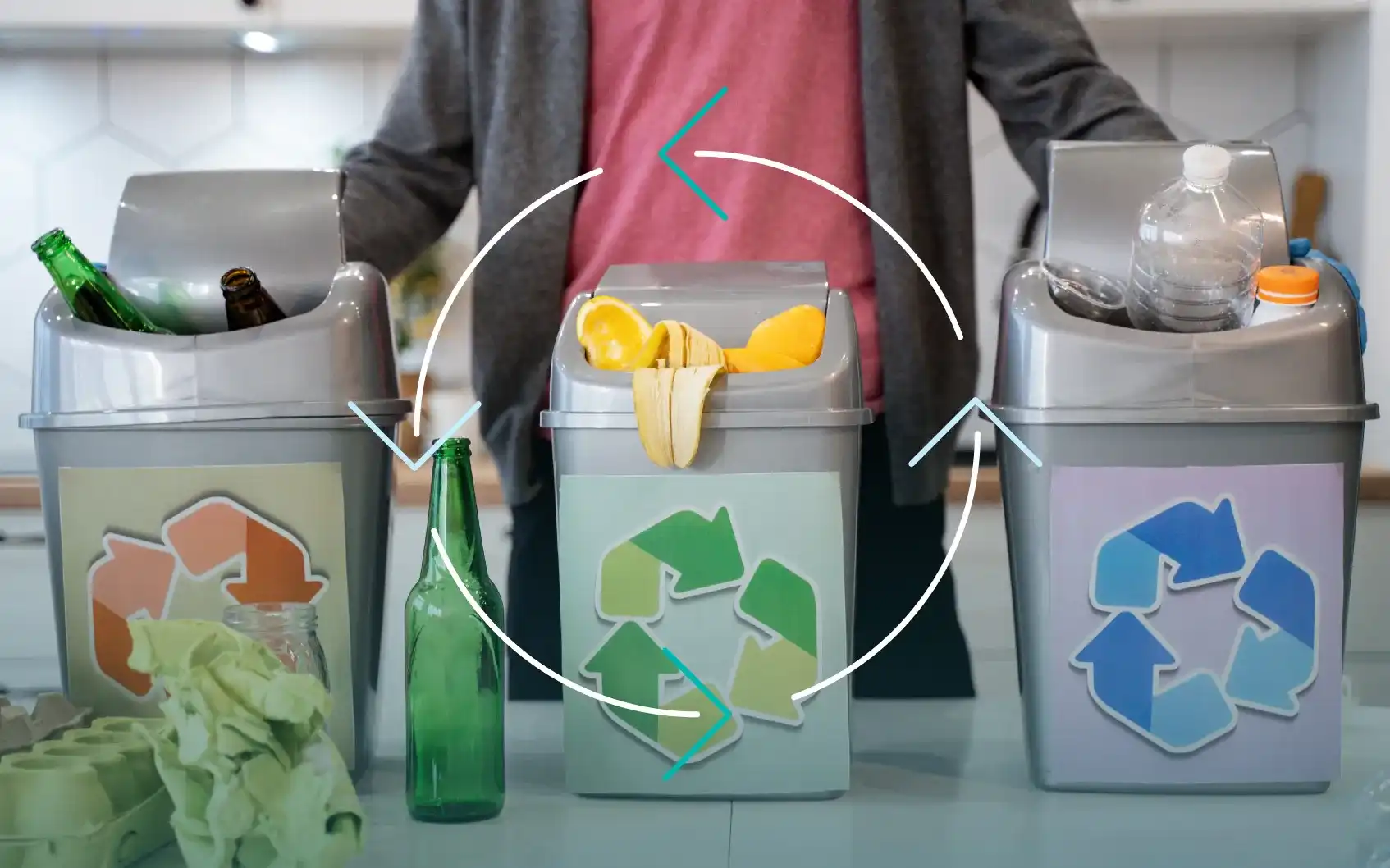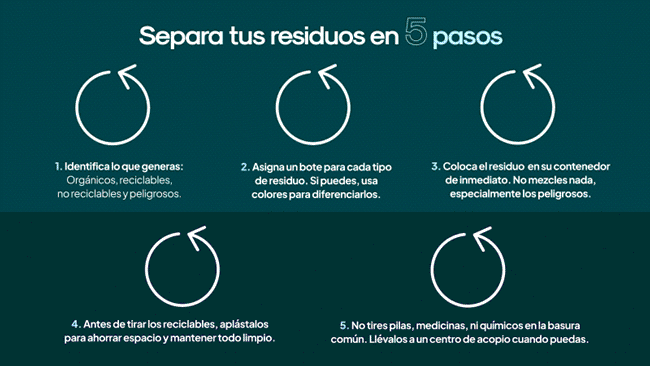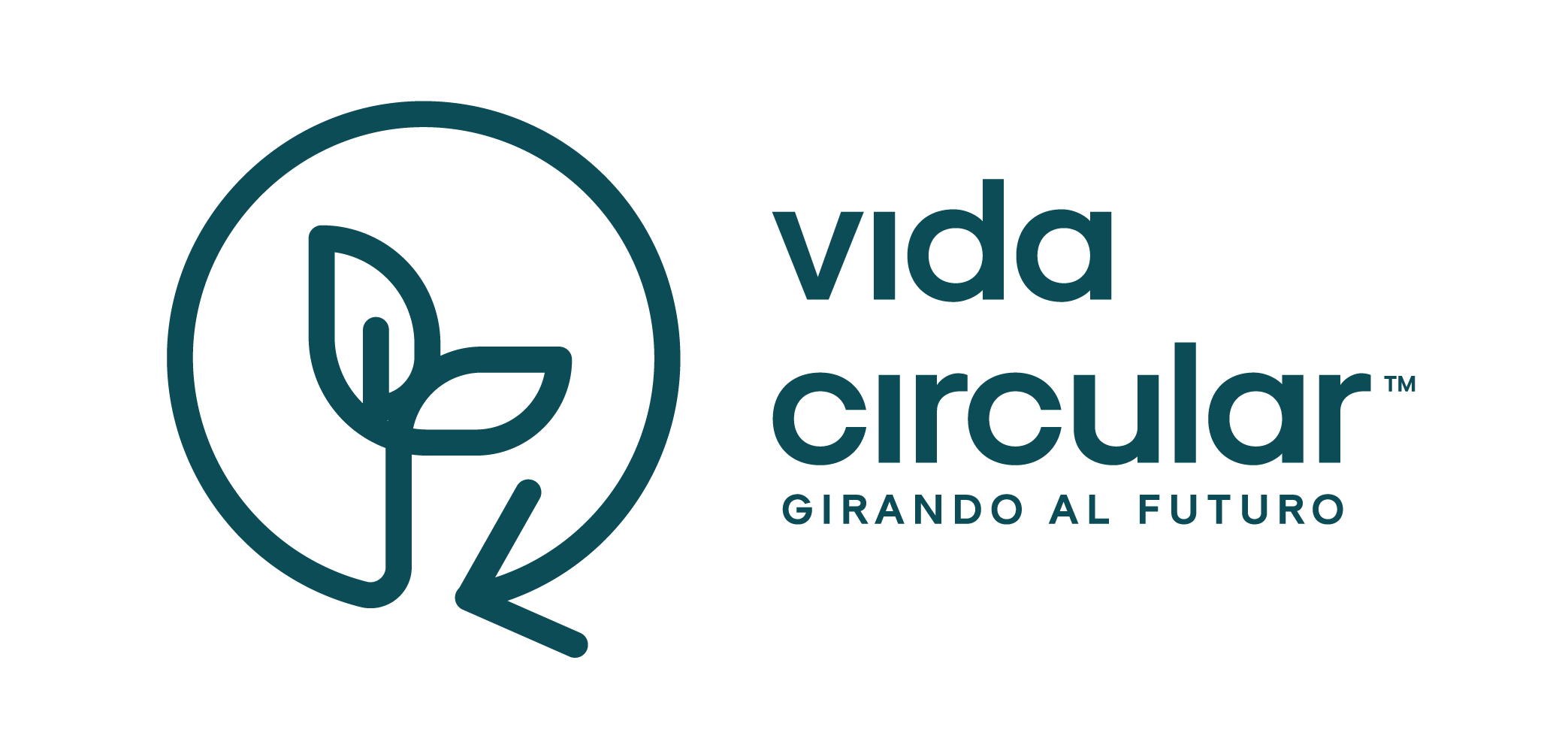
What is waste separation?
Importance of waste separation
By correctly separating waste, we contribute significantly to reducing pollution, conserving natural resources and promoting a healthier future for all. Below are the five most important points that underline the importance of this practice:
This is crucial because landfills emit large amounts of greenhouse gases, such as methane, which are more potent than carbon dioxide in global warming. In addition, reducing the amount of waste in landfills minimizes the risks of soil and water contamination, which can occur when these wastes are improperly decomposed.
Proper waste separation allows materials such as paper, glass, metal and certain plastics to be collected and recycled efficiently. This process not only conserves natural resources, but also reduces the need to extract new raw materials, which means less environmental impact.
Proper waste segregation helps prevent the release of hazardous toxins into the air, soil and water. This is especially important when handling hazardous waste, such as batteries, chemicals and electronics, which, if not handled properly, can seriously contaminate the environment and pose a risk to human health.
By correctly separating waste, reuse and recycling is facilitated, reducing the need for new materials and minimizing waste. This approach is not only more sustainable, but also fosters innovation in product design, encouraging the creation of goods that are more durable, repairable and recyclable.
Each person who participates in this process contributes to a collective effort to protect the environment on a global scale. By reducing the amount of waste that pollutes the planet, we promote a cleaner and healthier environment, not only for ourselves, but also for future generations.
Origin of waste
The waste we generate on a daily basis comes from a wide variety of sources, each with specific characteristics and challenges in terms of management and disposal. Understanding the origin of this waste is essential for its correct classification and treatment, which in turn allows us to implement more efficient and sustainable management strategies. Below are the main sources of waste and their classification according to origin and composition.
Households:
Households are one of the main sources of waste, generating a diverse mix of waste including food, packaging, cleaning products, clothing, electronics, among others.
Organic (such as food and garden waste), inorganic (such as plastics, glass and metals) and hazardous waste (such as batteries and household chemicals) are generated here.
Industries:
Industries produce large quantities of waste as a result of manufacturing, processing and production of goods. These wastes can vary widely, depending on the industrial sector, and include everything from metals and plastics to chemicals and hazardous wastes.
Proper industrial waste management is essential to minimize environmental impact. This includes recycling materials, reducing waste generation in the production process and the safe disposal of hazardous waste.
Retail:
Retailers, from small retailers to large shopping centers, generate a wide variety of waste, mainly from packaging, damaged or unsold products, and administrative activities.
Recyclable waste (such as paper, cardboard, and plastic) is predominant in retail, but organic waste (such as food waste from supermarkets and restaurants) is also generated.
Agricultural activities:
Agriculture is another important source of waste, generating large volumes of organic waste, such as crop residues, manure and unharvested agricultural products.
Mainly organic waste (crop residues, manure) and some inorganic waste (such as greenhouse plastics and pesticide containers) are generated.
Waste management in agriculture is vital to avoid soil and water contamination. It is ideal to take into account the proper use of fertilizers and pesticides can reduce the amount of hazardous waste.

Differences in waste types
Proper waste separation requires understanding the differences between the various types of waste we generate in our daily activities. Each type of waste has specific characteristics that determine its proper management, which is valuable to minimize its environmental impact and maximize its recycling or reuse potential. We share with you the main types of waste:
Organic wastes: These are biodegradable materials that come from living beings, such as plants, animals and their derivatives. These wastes decompose naturally by the action of microorganisms, transforming into compost or other forms of matter that can be reintegrated into the soil as nutrients.
Examples: Food scraps, fruit and vegetable peels, pruning and garden waste, bones and coffee waste.
Inorganic wastes: These are materials that are not biodegradable, i.e. they do not decompose easily in the environment. These wastes are usually the result of industrial processes and the consumption of manufactured products.
Examples: Plastics, metals, glass, ceramics and treated cardboard.


Hazardous waste: Contain chemicals or materials that pose a significant risk to human health and the environment
. These wastes require specialized management to avoid contamination and possible damage.
Examples: Batteries, cleaning products, expired medicines, paints, used oils, electronic devices and hospital waste.
Recyclable waste: Recyclable waste is material that can be processed and reused to make new products, reducing the demand for virgin natural resources and the amount of waste going to landfills.
Examples: Paper, cardboard, glass, certain plastics (such as PET and HDPE), metals such as aluminum and steel, and textiles.

Sorting, reuse and recycling: Keys to efficient waste separation
Proper waste separation is essential to ensure that materials are sorted, reused and recycled efficiently. This process not only facilitates the transformation of waste into new products, but is also an essential pillar of the circular economy, a model in which resources are used sustainably, minimizing waste generation.
Proper sorting to maximize recycling
By separating waste into specific categories - such as organic, inorganic, hazardous and recyclable - we facilitate its subsequent handling. This classification is crucial because each type of waste requires different treatment. For example, organic waste can be composted to produce fertilizer, while inorganic waste such as glass and metals can be recycled and transformed into new products. Without proper sorting, recyclable materials can become contaminated, making them more difficult or even impossible to process.
Reuse as part of the life cycle of materials
Reuse is another key benefit of proper waste separation. By identifying materials that still have value, such as certain plastics, metals or electronic components, these products can be put to new uses without the need for intensive recycling. This not only extends the useful life of the materials, but also reduces the demand for virgin resources, saving energy and reducing the environmental footprint.
Contribution to the circular economy
By actively participating in waste separation, we contribute to the development of a circular economy, where resources are kept in use for as long as possible. In this model, products are designed to be recycled and reused, which reduces the need for the extraction of new raw materials and reduces the amount of waste going to landfills. The circular economy promotes a more efficient and responsible use of resources, creating a continuous cycle of production, use and recycling.

Garbage or waste?
It is important to distinguish between "garbage" and "waste". Trash refers to materials that have no value or utility, while waste is material that can still have value if handled properly. Separating waste allows you to identify which materials can be recycled or reused.Garbage
- Materials that have lost their value and have no possibility of reuse or recycling.
- Clothes that are badly worn and cannot be donated.
- Sweeping waste, such as dust and lint.
- Highly contaminated food. - Disposal in landfills or controlled incineration.
Waste
- Materials that can still have value if properly managed, either through reuse or recycling.
- Plastic bottles.
- Food scraps that can be composted.
- Recyclable paper and cardboard.
- Separation at source for recycling or composting. - Processing in recycling plants.
 after
after
 before
before
Conclusion: Waste separation
Waste separation is much more than a simple daily practice; it is an act of shared responsibility that has a profound impact on the sustainability of our planet. By correctly separating waste, we not only facilitate processes such as recycling and reuse, but also contribute to the creation of a circular economy, where resources are used efficiently and waste generation is minimized. This approach not only reduces pressure on landfills and mitigates environmental pollution, but also empowers us as individuals to make decisions that protect and preserve the environment for future generations.
Adopting waste separation as a daily habit is an essential step towards a more sustainable future. It is not just a matter of complying with a rule or regulation, but of understanding that our daily actions, however small they may seem, have the power to generate significant change. Each correctly sorted and managed waste is a tangible contribution to a cleaner, healthier and fairer world. In this sense, waste separation is ultimately an expression of our commitment to the common good and a positive legacy we leave for those who come after us.




